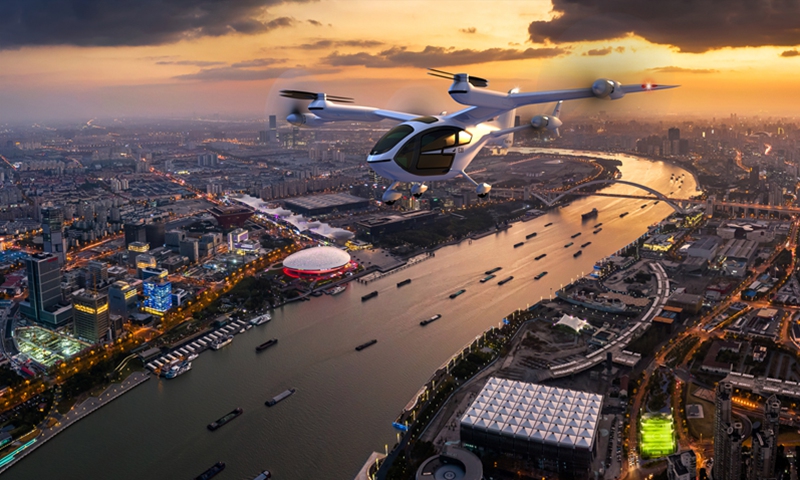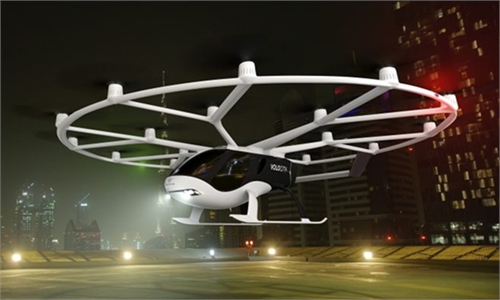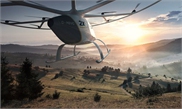
Electric vertical takeoff and landing (eVTOL) aircraft E20 Photo: Courtesy of Shanghai TCab Technology Co
Affordable short-distance travel by air taxi is expected in China in three years' time as a new electric vertical takeoff and landing (eVTOL) aircraft—which brings urban air mobility to reality—has entered its testing phase and is expected to enter commercial use around 2024.
The aircraft named E20 is a pure electric five-seat tiltrotor (one pilot and four passengers) with a designed cruising speed of 260 kilometers per hour and a maximum design rage of 200 kilometers, according to its developer, the Shanghai TCab Technology Co, which announced the launch of its testing period on Monday.
It has a wingspan equivalent to the diameter of a small helicopter's rotor, permitting the eVTOL aircraft to make use of the smallest helipad infrastructures on existing high-rises without a runway.
China's low-altitude aviation industry is expected to boom with a series of favorable policies being rolled out. Central China's Hunan Province became the first province in China to pioneer all-area low-altitude flights in July, followed by East China's Anhui and Jiangxi provinces. Besides, East China's Zhejiang Province also proposed to vigorously support and develop civil aviation, general aviation, airport construction, helicopter landing field construction and low-altitude tourism.
Morgan Stanley estimated the market for urban air mobility could hit $1 trillion by 2040, with the Chinese market accounting for a quarter of that amount.
Although there is no related Chinese laws and regulations for urban air mobility at present, TCab Tech is exploring the certification basis for passenger-carrying eVTOL with the Civil Aviation Administration of China (CAAC) which will also refer to overseas policies, Jiang Jun, co-founder and chief market officer of TCab Tech told the Global Times on Monday.
According to Jiang, the first application scenario for the aircraft will be low-altitude tourism with a tourism city or Shanghai's suburbs as the first option.
The design of the aircraft makes it easy for it to take off and land vertically from skyscraper rooftops, standard helipads, and lawns, and transport passengers from point-to-point.
According to Jiang, the 260-kilometer-per-hour speed of the aircraft is about five times the speed of taxis, so it can save a lot of travel time for passengers. In the future, the travel cost of air taxis will be similar to the fees of taxis today when the aircraft realize mass production. By then, the price of the aircraft is expected to be lowered to several million yuan, Jiang noted.
Besides, R&D of the aircraft was strictly conducted in accordance with the safety and reliability of civil passenger aircrafts.
It is expected that aircraft could be fully charged in half an hour in the next three or four years as the capacity of the batteries improve as well, Jiang added.


